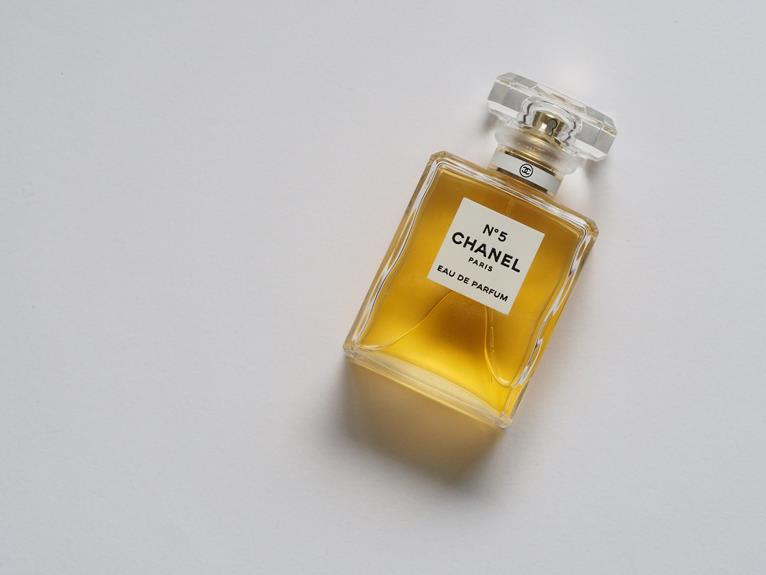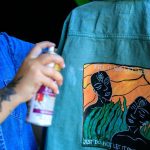Deciding which basting spray is best for quilting can be a daunting task, given the array of options available. When choosing the ideal basting spray, several key factors should be considered, including:
- Hold strength
- Odor considerations
- Repositioning ability
- Spray application
- Price and value
By carefully evaluating these factors, you can make an informed decision that will contribute to the success of your quilting project.
Key Takeaways
- Strong hold and bonding power are crucial for keeping quilt layers in place during quilting.
- Choose basting sprays with low VOCs and environmentally friendly ingredients to minimize odors and respiratory health risks.
- Look for basting sprays with strong adhesive properties that allow for precise repositioning without residue or fabric damage.
- Consider the even coverage, user-friendly application, and value for budget when selecting a basting spray for quilting.
Hold Strength
You need a basting spray with strong hold for quilting. The hold strength of a basting spray is crucial in ensuring that the layers of your quilt stay in place during the quilting process. When considering the hold strength, look for a basting spray that offers excellent bonding power without leaving any adhesive residue on the fabric. A strong hold is essential for keeping the quilt layers taut and preventing any shifting or bunching while quilting.
The bonding power of the basting spray is what determines its ability to keep the layers of the quilt securely together. A basting spray with strong bonding power effectively adheres to the fabric, creating a reliable bond that holds the layers in place until you're ready to remove the basting.
Additionally, it's important to consider the potential for adhesive residue. A high-quality basting spray with strong hold shouldn't leave any sticky or gummy residue on the fabric once it's removed. This ensures that your quilt remains clean and free from any unwanted substances that could affect its appearance or longevity.
Odor Considerations
When considering odor considerations in basting sprays for quilting, it's important to ensure that the spray doesn't leave behind any unpleasant or lingering smells that could affect the overall quality of your quilt. The chemical composition of basting sprays plays a significant role in the odors they emit. Opt for basting sprays with low volatile organic compounds (VOCs) and environmentally friendly ingredients to minimize any potentially harmful odors. Additionally, consider basting sprays specifically labeled as odorless or low odor to ensure a pleasant quilting experience.
Respiratory health is another crucial factor to consider when it comes to the odor of basting sprays. Some chemicals used in basting sprays can negatively impact respiratory health, especially in poorly ventilated areas. Look for basting sprays that are non-toxic and safe for indoor use to minimize any potential respiratory issues. It's advisable to use basting sprays in well-ventilated spaces and consider wearing a mask if working with sprays that may emit strong odors.
Repositioning Ability
To achieve optimal results when basting your quilt, assess the repositioning ability of the spray. When evaluating the repositioning control of a basting spray, consider the following key factors:
- Adhesive Properties: Look for a basting spray with strong adhesive properties that allow it to hold the quilt layers together securely, yet still enable easy repositioning when needed during the quilting process.
- Repositioning Control: Seek a basting spray that provides precise repositioning control, allowing you to adjust the quilt layers without leaving any residue or causing damage to the fabric.
- Longevity of Repositioning: Consider the duration for which the spray allows you to reposition the quilt layers. A good basting spray should maintain its repositioning ability for an extended period, giving you ample time to adjust the quilt as necessary.
- Feedback from Quilters: Read reviews and seek recommendations from experienced quilters regarding the repositioning ability of the basting spray. Their insights can provide valuable guidance in making an informed choice.
Assessing these factors will help you select a basting spray with excellent repositioning ability, ensuring a smooth and efficient quilting process.
Spray Application
The application of the basting spray is a crucial step in ensuring the effective adhesion of the quilt layers before quilting. When selecting a basting spray for quilting, it's essential to consider the spray application. Look for a basting spray that provides even coverage with easy application.
Achieving even coverage is vital to ensure that the quilt layers are uniformly secured, preventing any shifting or bunching during the quilting process. An ideal basting spray should offer a fine mist that evenly covers the quilt backing without leaving any sticky residue.
Additionally, easy application is key for a smooth and efficient process. A basting spray with a user-friendly nozzle and ergonomic design can make the application process hassle-free. This ensures that the spray is applied precisely where needed, minimizing waste and mess.
Ultimately, a basting spray with even coverage and easy application can streamline the quilting process, providing a strong bond between the layers and yielding professional-looking results.
Price and Value
Why should you consider the cost and effectiveness of basting sprays when making your quilting selections? When choosing a basting spray for your quilting projects, it's essential to evaluate the price and value to ensure that you're getting the best product for your needs. Consider the following when comparing costs and assessing durability:
- Cost Comparison: Compare the prices of different basting sprays to find the best value for your budget. Some sprays may be more expensive but offer larger quantities, while others may be more affordable but require more frequent purchases. Consider the cost per ounce to get a true comparison of value.
- Effectiveness: Evaluate the effectiveness of the basting spray in terms of its ability to hold the layers of the quilt together without causing any damage. Look for reviews from other quilters to gauge the overall effectiveness of the product.
- Durability Assessment: Consider the durability of the basting spray once applied to the quilt. Does it hold up well during the quilting process, or does it lose its adhesive properties over time?
- Long-Term Value: Assess the long-term value of the basting spray. While a product may have a higher upfront cost, it may offer better value in the long run if it requires fewer re-applications.
Frequently Asked Questions
Can Basting Spray Be Used on Other Types of Fabric Besides Quilting Cotton?
Yes, basting spray can be used on various fabrics besides quilting cotton. Consider fabric compatibility and follow proper spray application. Alternatives to basting spray include pinning and hand basting. Ensure fabric preparation for best results.
Are There Any Potential Health Concerns Associated With Using Basting Spray, Such as Respiratory Irritation or Skin Irritation?
When using basting spray, be mindful of potential health concerns like respiratory and skin irritation. To safeguard against these, ensure good ventilation and avoid direct contact with skin. Follow safety precautions for a worry-free quilting experience.
How Long Does Basting Spray Typically Last Once Applied to the Fabric?
Once applied, basting spray typically lasts for a considerable period, offering stability during quilting. Proper application techniques, such as spraying in a well-ventilated area and following manufacturer's instructions, ensure effective and lasting adhesion.
Can Basting Spray Be Easily Removed From Fabric if Needed?
When removing basting spray from fabric, gentle techniques are key to preserving the fabric. Use solvents or washing to dissolve the adhesive. Consider environmental impact and explore alternative methods like pinning for fabric preservation.
Are There Any Special Tips or Techniques for Using Basting Spray With Intricate Quilt Patterns or Designs?
When working with intricate quilt designs, applying basting spray in sections can help manage large projects. Use temporary adhesive for small areas or delicate fabrics. Always test on a scrap piece first. Smoothly apply and press to avoid wrinkles.
- How Does Ring Spun Cotton Affect Garment Fit and Shape Retention? - August 13, 2024
- What Are the Challenges in Producing Ring Spun Cotton? - August 13, 2024
- Is Ring Spun Cotton Suitable for Plus-Size Clothing? - August 13, 2024




